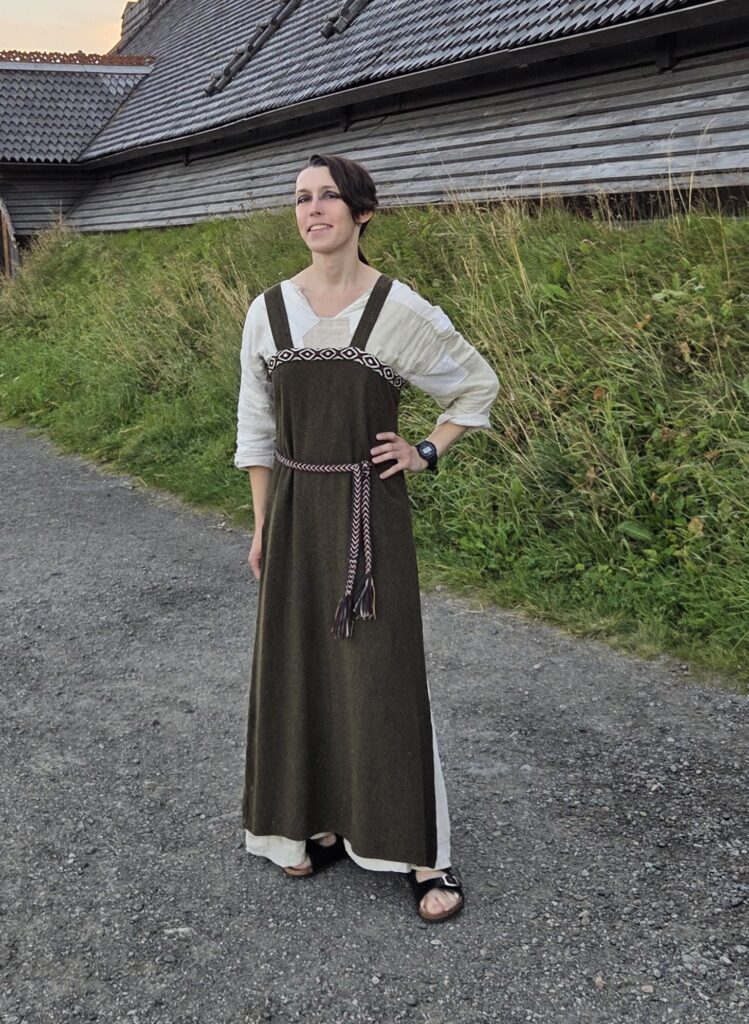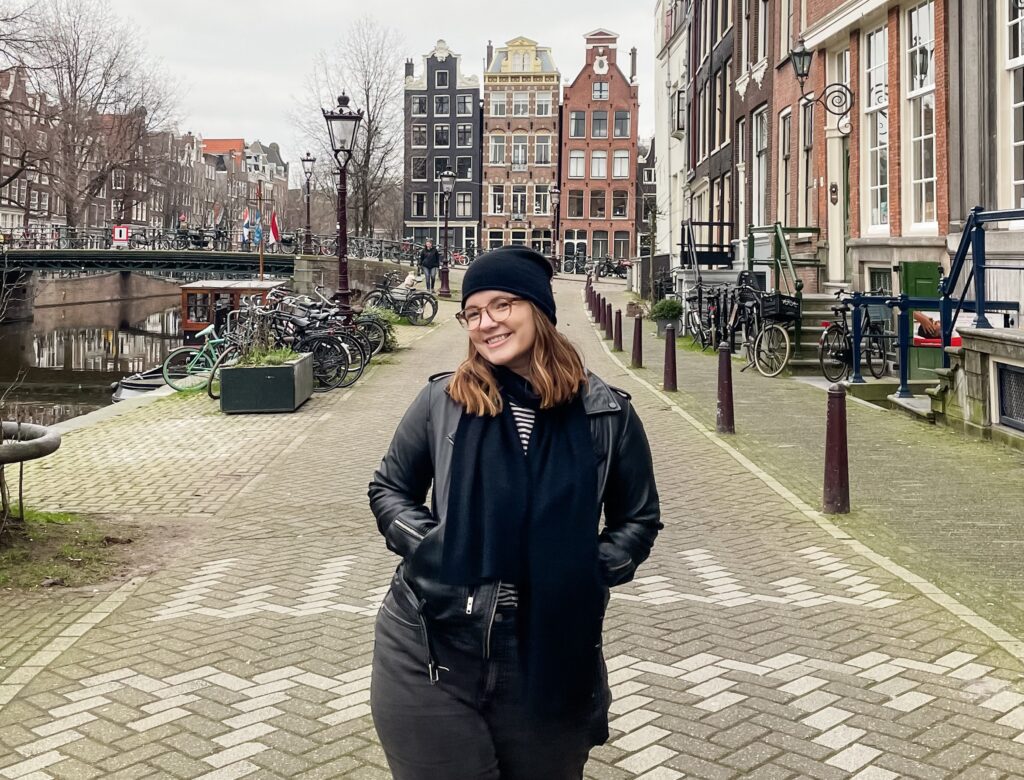Even a good travel day comes with a price tag and some frustrations—a sudden cancellation, a change in plans, a disappointing tourist trap. Sometimes there’s a literal price tag. Few travellers come back from vacation with more savings.
But for queer neurodivergent (ND) people, travel tosses even more marbles into their path. People with autism, ADHD and rarer forms of neurodivergence, such as bipolar disorder and Tourette Syndrome, must negotiate an array of environments that were not designed for them. Whether they’re navigating airports or seeking affirming communities abroad, queer neurodivergent travellers often find travel to be as exhausting as it is magnificent.
First, the magnificence. For Kayley Whalen, a trans and ND anthropologist, international travel helps her feel less self-conscious.

“What’s so common with neurodivergent people is that they don’t fit in, in their home country,” Whalen says. “So they go to another country and they’re a foreigner—and get a pass on being different.” Anything “weird” is often chalked up to their being a foreigner. In some ways, this is true for neurotypical (non-ND) queer travellers as well, who nevertheless understand the feeling of being alienated back home. Becoming a “foreigner” just switches one label for another.
Alicia Valenski, an AuDHD (autistic/ADHD) travel writer who created Lonely Planet’s first LGBTQ+ travel guide, says autism has been an advantage since she’s started living in the Netherlands. After moving to Amsterdam in 2022, Valenski discovered that the country’s culture of blunt honesty resonated with her autistic preference for direct communication. That’s not to mention North Holland’s thriving queer scene. “My queerness and neurodivergence didn’t make me feel ‘othered’ in the Netherlands,” she says. “Moving here has been a game-changer for my self-esteem and sense of belonging.”
Yet even in affirming spaces, travel systems can be daunting for neurodivergent (ND) folks. Airports, hotels and hostels are often built on a one-size-fits-all model. Bright fluorescent lights, rigid schedules and a lack of personal space are par for the course, laying a minefield for ND travellers. Sensory overload, lack of control and predictability, and unexpected social expectations can cause anxiety, migraines, meltdowns or shutdowns.
“Modern-day travel was not designed with neurodivergent folks in mind,” Valenski says. “Nearly every aspect of the travel experience, from planning to departure to the exhausted return home, requires tremendously more mental effort for us than it does for our neurotypical counterparts.” The “sensory hellscape” of U.S. airports, as she calls them, can trigger meltdowns even before a trip begins. Harsh lighting, combined with loud PA systems and crowded, noisy waiting areas, can cause ND travellers undue stress. Then add strict check-in schedules. Some airports offer “sensory rooms” stocked with dim lighting, plush furniture and soundproofed walls, but not all airports have this amenity yet.
For travellers with autism, some accommodations make it difficult to maintain a comforting routine. “Hostels are the worst,” says Whalen. “You can’t even have your own sleep schedule. [Fellow guests] come in at 9 a.m. They’re like, lights on, air conditioning off.” That’s not to mention the usual downsides of hostel life. “I’m 40 years old. I’m not staying in bunk beds anymore,” she says.
Faced with such challenges, neurodivergent travellers often become innovators. They create routines, hacks and tools that transform overwhelming situations into manageable ones.
Whalen’s yoga mat doubles as a portable sanctuary when they’re on the road. “When I’m on that rectangle, no one can fuck with me. Everyone leaves you alone. I literally never had someone say, ‘You can’t do yoga here.’ Not even at airports.” Earbuds and meditation music reinforce her protective bubble.

Valenski relies on a laminated packing list to reduce anxiety. Like many ND travellers, she also fills her personal bag with sensory aids (from Loop brand earplugs to cooling facial spray) and packs her own safe foods to avoid mid-flight culinary surprises. Perhaps her most ingenious tactic is her “itinerary menu,” a collection of optional activities that she assembles on Google Maps, allowing her to pick and choose activities each day rather than stick to rigid timetables.
“It means there’s always downtime in my schedule while travelling, so I can rest, recharge and avoid burnout,” Valenski says.
Neurodivergent travel thrives when it refuses the conventional moulds of tourism, prioritizing instead self-knowledge, sensory care and flexibility. Community can play a major role in this. For many queer ND travellers, the first step in any new city is to connect with local queer or ND groups online. In Amsterdam, Valenski came out as ND in Facebook groups and found friendships that eventually led to shared trips. Whalen found an unexpected community in Bunk-a-Biker, a couchsurfing website for nomadic bikers. “Bikers are hella neurodivergent. They’re…they’re weird.” Often, queer communities and ND communities intersect, or at least share a mutual understanding of their otherness.
The Hidden Disabilities Sunflower symbol is one tool travellers can use to discreetly communicate disabilities at places like airports. Another is the IBCCES Accessibility Card, which allows card carriers to register for additional assistance and flexibility at certain attractions. Organizations like KultureCity certify sensory-inclusive venues as having trained staff and designated quiet spaces. Apps like Aubin, which helps with travel planning on public transportation, and Soft Landing, which helps with various aspects of travel planning, are also aimed at ND travellers.
Yet there is need for systemic reform. Valenski argues that a broader adoption of simple accommodations—quiet rooms, flexible check-in policies, clear signage and staff trained in neurodiversity—could transform the travel industry.
“Small changes like this,” she says, “have the potential to make travel more accessible for an entire group of people who have written off the idea of travelling because their needs have been ignored for so long.”
Considering that 15 to 20 percent of the human population is estimated to be neurodivergent, such reforms would reach far beyond the subcommunity of queer ND travellers.
The promotional and influencer focus on “must do” and “must eat” lists also causes unnecessary stress. Many ND travellers build rest into their daily schedules, whether those schedules are rigid or not. Success doesn’t come from hitting every landmark but from designing a trip that sustains their bodies and minds. “Success” looks like coming home intact, affirmed and maybe even energized.
“I travel slow,” Whalen says. “Rather than trying to hit more places, I give myself more time and flexibility.”
Trips designed around rest and community don’t solely serve autistic or ADHD travellers. Such models create richer and more humane forms of travel for anyone who’s prone to stress while on the road. In this way, ND travellers are already charting paths away from the overstimulating, hyper-efficient norms of global tourism, proposing a blueprint for how travel can become more accessible and meaningful.
Some studies suggest that ND people are more likely than others to identify as queer. So the LGBTQ+ community has a role to play in advocating for overhauling existing travel structures, making it part of larger strategies around inclusion.
Everyone deserves to have a stress-free vacation at least once in their life. We queers know that better than anyone.


